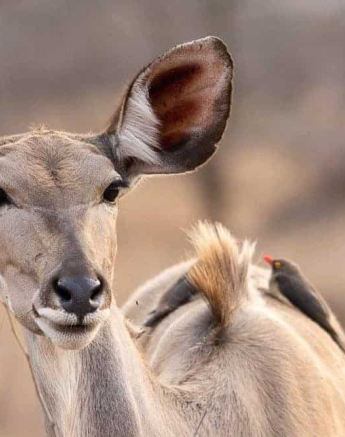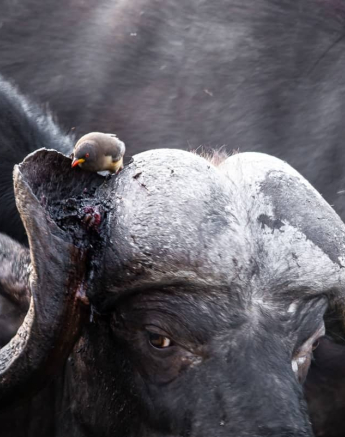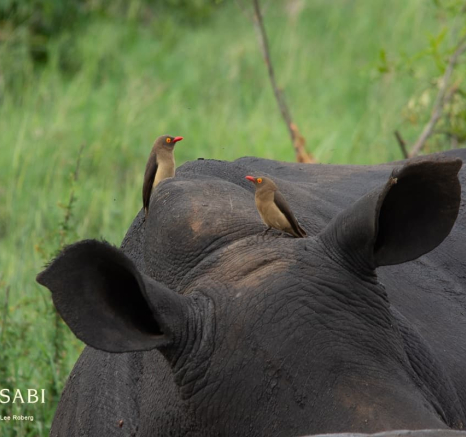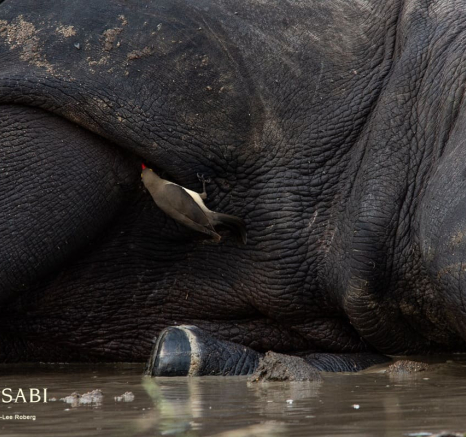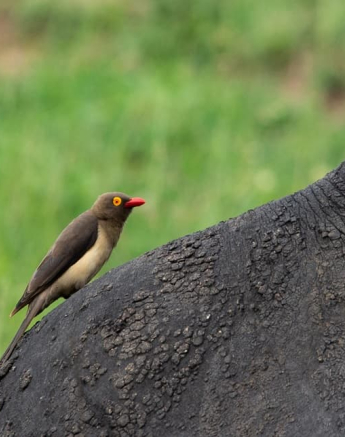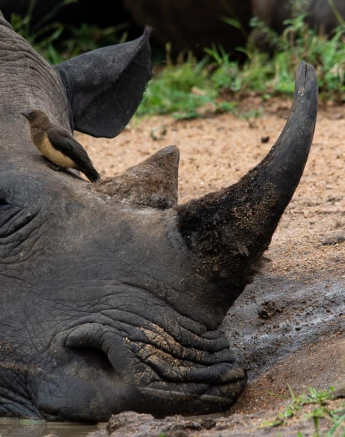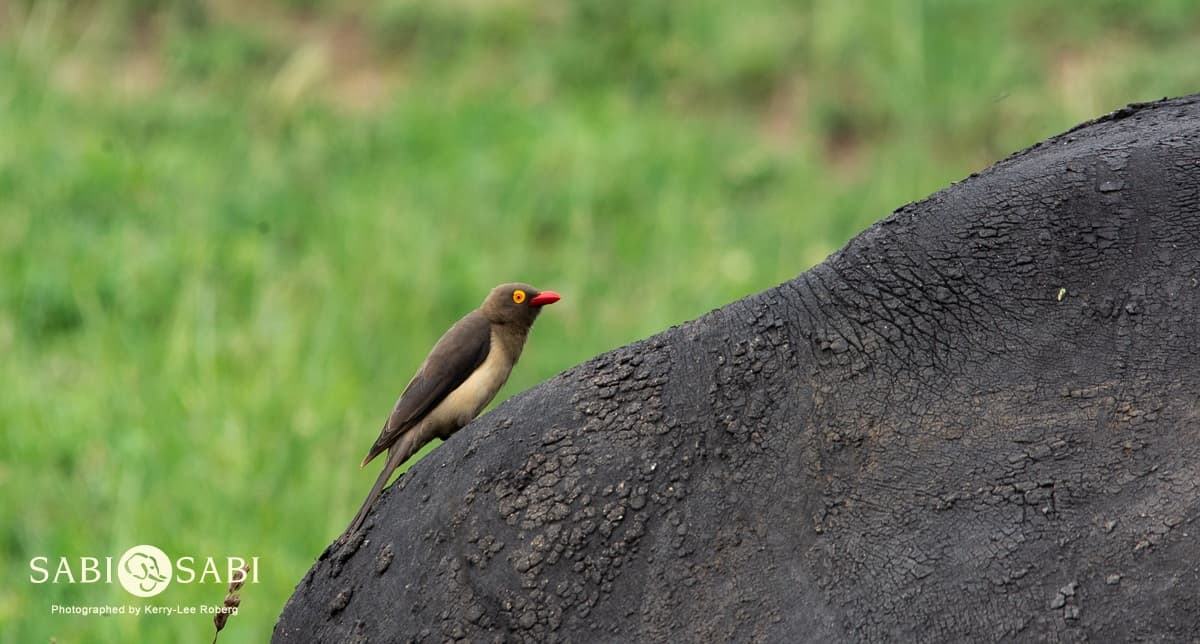Red-billed Oxpecker
on Mar 08, 2019Species Name: Red-billed Oxpecker
Scientific Name: Buphagus erythrorhynchus
Weight: 50g
Size: 20cm
General Habitat: Open woodland and savannah
Diet: Hematophagous / insectivorous
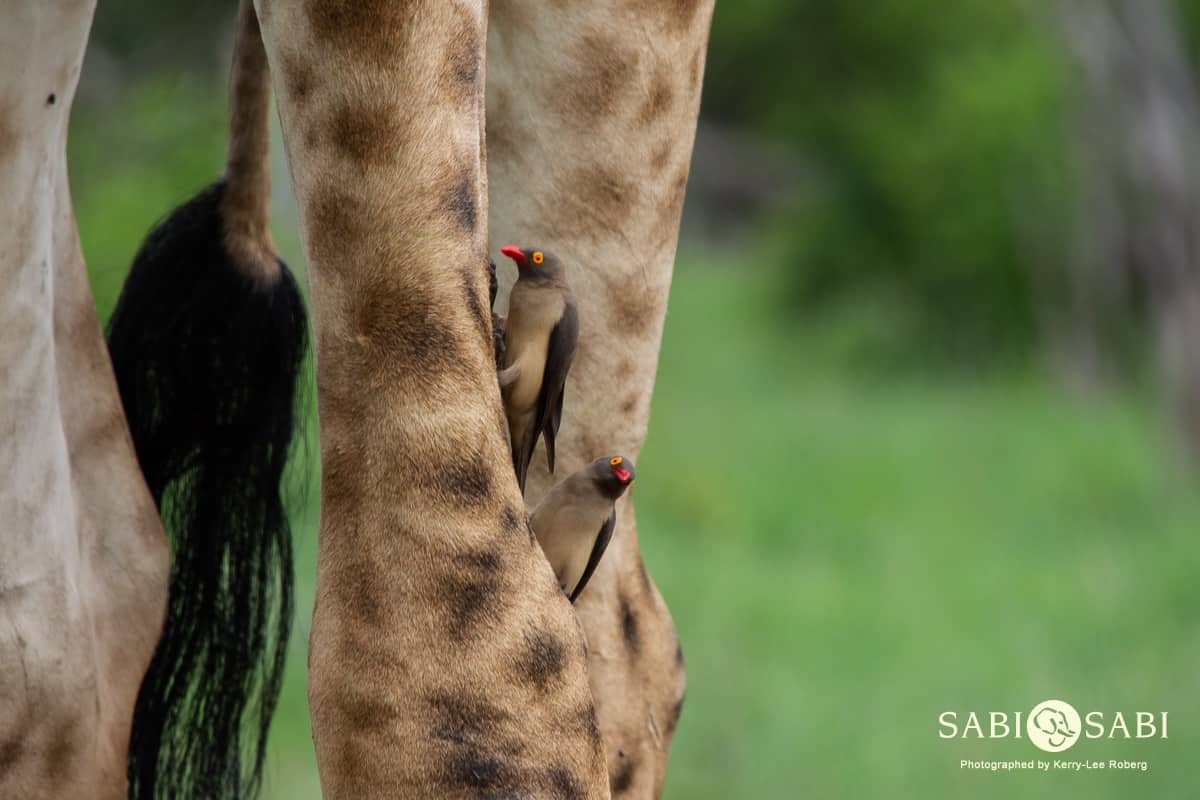
We are lucky enough to find both species of oxpeckers here at Sabi Sabi, namely the Red-billed Oxpecker and the less frequently seen, Yellow-billed Oxpecker. In this blog I will be discussing and focusing on the Red-billed Oxpecker. If you have ever been on a safari, I’m sure you will remember the small brown-grey birds with bright red beaks and eyes as well as a bright yellow wattle surrounding the eye.
Oxpeckers are special birds in the bush which play a very important role. Unlike any other bird in the country, the Oxpecker is predominantly hematophagous, meaning its diet consists largely of blood. It is for this reason that they are generally seen dancing along the bodies of their host in search of ticks and other ectoparasites. The Red-billed Oxpecker is specially adapted – it has a strong tail which it uses to prop itself up against the animal whilst it clings to the skin using its long, sharp claws. From here the bird uses its beak in a scissor-like manner plucking ticks from its host.
Red-billed Oxpeckers may be found on a variety of hosts including Giraffes, Cape Buffalo, Impalas, Warthogs, Kudus and Rhinos. One animal that generally does not tolerate these birds are Elephants. Often ticks migrate to the more exposed or softer areas of the animal such as under the legs, in the ears, on the flanks and around the eyes. It has been reported that an animal, such as an Impala, can host around 500 ticks at any given time. Although ticks in South Africa do not harbor Lyme Disease, they can cause another bacterial infection known as tick bite fever which is less harmful. Red-billed Oxpeckers can consume up to 100 swollen mature ticks and up to 1000 tick larvae in a day so it is no surprise then that Oxpeckers are generally tolerated by most herbivore species.
Does the oxpecker in any way harm its host? Well, ticks are not the only thing Red-billed Oxpeckers feed on, they consume rotting wound tissue on animals (and periodically also eat other insects). This has both an upside and a downside. On the one hand, the Oxpecker is keeping the wound relatively clean, but on the other hand, the birds constantly pluck off and consume scabs and drink underlying blood, thus prolonging the healing process. However, due to the large number of parasites removed from the host, I think it’s safe to say that the Oxpeckers do more good than harm.
Red-billed Oxpeckers are not only seen clinging to their hosts feeding, but often also find a mate and copulate on the host’s body. The female Oxpecker will lay between 2-5 eggs in a tree cavity which is lined with grass and hair plucked from an unwitting host. The eggs will hatch after ± 2 weeks and chicks will leave the nest after ± 30 days and will initially have a black beak.
Red-billed Oxpeckers used to occur anywhere in South Africa where they could find a host animal to feed from, but due to an outbreak of Rinderpest and overuse of pesticides on livestock, the numbers plummeted. The birds have since made a comeback but are still considered “near-threatened”.
As field guides, we have been trained to always pay attention to the distinct calls of Oxpeckers - especially when walking in the bush as previously mentioned these birds often sit on species such as Cape Buffalo and White and Black Rhinoceros. Due to this, there is a chance that the calls of the Oxpeckers may signify the presence of dangerous game species.
My Memorable Sighting
It is not easy to pick a single special sighting of a Red-billed Oxpecker, observing these birds is always interesting. Watching them pick around in the nostril of a White Rhinoceros, disappear into the ear of a Cape Buffalo or challenge the swishing tail of a Plains Zebra always captures one’s attention. I have witnessed a Red-billed Oxpecker plucking the fur from a young Kudu which proved to be a rather interesting sighting.
Photo Content
